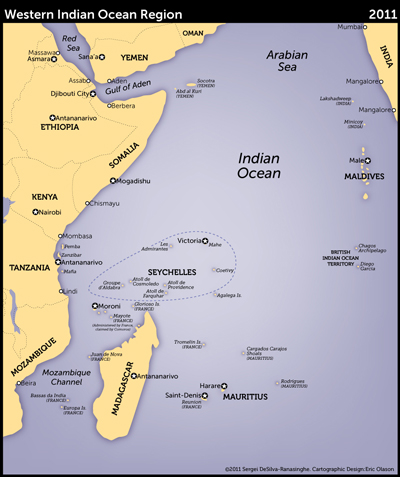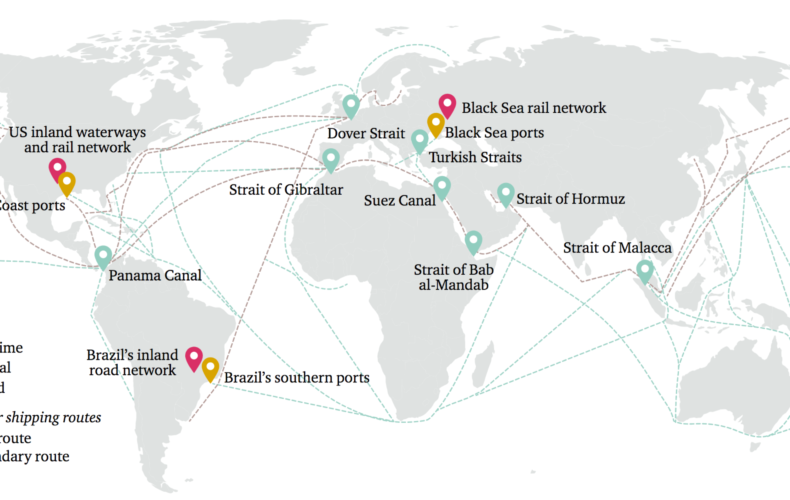Focus: GS-II International Relations, Prelims
Why in news?
India has joined as an observer of the Indian Ocean Commission — the inter-governmental organisation that coordinates maritime governance in the south-western Indian Ocean — a move that will bolster Delhi’s Indo-Pacific vision.
What are the benefits?
- This move has strategic importance as the Commission is an important regional institution in the Western Indian Ocean (WIO).
- It facilitates collective engagement with the islands in Western Indian Ocean that are becoming strategically significant.
- It boosts cooperation with France that has strong presence in the Western Indian Ocean and lends depth to India’s SAGAR policy of PM Narendra Modi 2015.
- The move also strengthens western flank of the Indo-Pacific and is a stepping stone to security cooperation with East Africa.
Indian Ocean Commission
- The Indian Ocean Commission (French: Commission de l’Océan Indien, COI) is an intergovernmental organization that was created in 1982 at Port Louis, Mauritius and institutionalized in 1984 by the Victoria Agreement in Seychelles.
- The COI is composed of five African Indian Ocean nations: Comoros, Madagascar, Mauritius, Réunion (an overseas region of France), and Seychelles.
Missions of COI
- COI’s principal mission is to strengthen the ties of friendship between the countries and to be a platform of solidarity for the entire population of the African Indian Ocean region.
- COI’s mission also includes development, through projects related to sustainability for the region, aimed at protecting the region, improving the living conditions of the populations and preserving the various natural resources that the countries depend on.
- Being an organisation regrouping only island states, the COI has usually championed the cause of small island states in regional and international fora.
Western Indian Ocean (WIO)

- The Western Indian Ocean spans the offshore waters from Somalia to South Africa, and extends beyond Madagascar to include many Small Island Developing States (SIDS).
- This expanse of water encompasses a diverse range of ecologically and nutritionally rich ecosystems such as hydrothermal vents and seamounts, with depths of up to 7,000 metres.
SAGAR Programme (Security and Growth for All in the Region)
- SAGAR is a term coined by PM Modi in 2015 during his Mauritius visit with a focus on blue economy.
- It is a maritime initiative which gives priority to Indian Ocean region for ensuring peace, stability and prosperity of India in Indian Ocean region.
- The goal is to seek a climate of trust and transparency; respect for international maritime rules and norms by all countries; sensitivity to each other`s interests; peaceful resolution of maritime issues; and increase in maritime cooperation.
- It is in line with the principles of Indian Ocean Rim Association.
Significance of Western Indian Ocean (WIO) for India

- The Western Indian Ocean (WIO) is a strategic sub-theatre of the Indian Ocean linking the Southeastern coast of Africa to the wider Indian Ocean and beyond.
- It is home to one of the key chokepoints in the Indian Ocean- the Mozambique Channel.
- While Comoros sits at the northern mouth of the Mozambique Channel, Madagascar borders the channel to its west.
- While the channel lost its significance post the opening of the Suez Canal, the recent hostilities near the Strait of Hormuz brought the channel back into focus as the original route for bigger commercial vessels (especially for oil tankers).
- While Comoros sits at the northern mouth of the Mozambique Channel, Madagascar borders the channel to its west.
- While the channel lost its significance post the opening of the Suez Canal, the recent hostilities near the Strait of Hormuz brought the channel back into focus as the original route for bigger commercial vessels (especially for oil tankers).
- For India, engagements with this region will become critical as the Navy begins to strengthen its presence under its mission based deployments. Engagements with the region, especially with the islands- given their geo-strategic location- could become key in supporting Indian naval presence as well as furthering Delhi’s Indian Ocean engagement.




